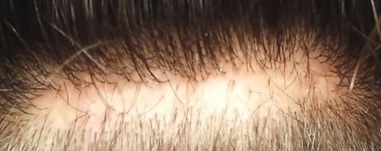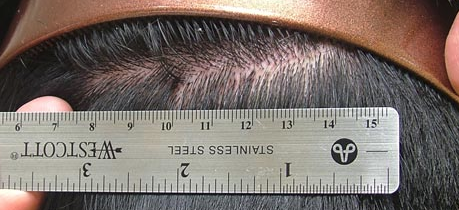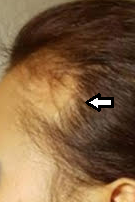Over the over again, women from all over the world are writing to me asking, “What can be done for me?” I will list alternative options below, but I want to warn those of you who are reading this material to recognize that none of this is proven to solve the hair loss problems of most women. If it works, it may work in selective women, those that have a more clear androgenic (male-like) component of their hair loss. In addition, some women with combined genetic hair loss and Polycystic Ovaries (PCO) develop male-like patterned hair loss and could be candidates for the hormone treatments discussed below. I am loathe to recommend these treatments, because I do not personally feel comfortable with recommending hormone altering therapies, as some of them may impact ovarian, breast, and uterine cancer risks — so with that warning, please read on.
Finasteride use in women:
There have been articles on the failure of 1mg of finasteride to impact women’s hair loss. Now, for the use of higher dose finasteride than normally prescribed in men, the Iorizzo article (see references below) concludes, Sixty-two percent of the patients demonstrated some improvement of their hair loss with the use of finasteride, 2.5 mg/d, while taking the oral contraceptive. It is unclear whether the success was due to a higher dosage of finasteride (2.5 mg instead of 1 mg) or to its association with the oral contraceptive containing drospirenone, which has an antiandrogenic effect. These two drugs may complement each other and to get the effect, they both may be needed. Further studies are necessary to understand which patterns of female pattern hair loss respond better to this treatment, for I am sure that all women will not respond the same way. The article leaves us confused. It is not clear which are those who can be treated and there are no statistics on safety and side effects (this was not the focus of the article, however). The entire article is based upon conjecture, something that the authors recognize is the problem that the limited study creates. What concerns me is that with the promise that 62% of women may be helped by Propecia, desperate women with the help of inexperienced doctors will start taking finasteride without understanding the long term impact of these drugs on women. Maybe downstream, we may see a Vioxx type side effect with regard to cancer. With that said, there is a suggestion in this article that finasteride may have value for women and if this can be seen with better, more controlled studies, then this may be a breakthrough. I suspect that women with a ‘male pattern’ to their hair loss may experience more benefit over those without it. This is conjecture (an educated guess) on my part.
Antiandrogen treatment for hair loss in women:
The second article (see references below) starts off, “It has not been conclusively established that female pattern hair loss (FPHL) is either due to androgens or responsive to oral antiandrogen therapy.” This opening correctly set the tone of the article. Two different medications were used: spironolactone and cyproterone acetate. Neither was clearly better than the other. Discussion of the authors said, “The treatment under a doctor’s care went for 16 months. 44% had improvement, 44% had no improvement and 10% had further hair loss“. Many dermatologist are presently using spironolactone and cyproterone acetate and there is selective enthusiasm for these drugs, but it is not universally accepted as the mainstay for treating women’s hair loss. Doctors come under a great deal of pressure to do something. The question here is will spironolactone and cyproterone acetate treatment provide enough benefit for the costs and the pain of the injections that are required with repetitive treatments over a prolonged period of time?
References:
- ARCH DERMATOL/VOL 142, MAR 2006: Matilde Iorizzo, MD; Colombina Vincenzi, MD; Stylianos Voudouris, MD; Bianca Maria Piraccini, MD, PhD; Antonella Tosti, MD, Titled Finasteride Treatment of Female Pattern Hair Loss
- British Journal of Dermatologist 2005, Article by R. Sinclair, M/ Weweromle amd D. Jolley from Australia titled: Treatment of female patterned hair loss with oral antiandrogens



